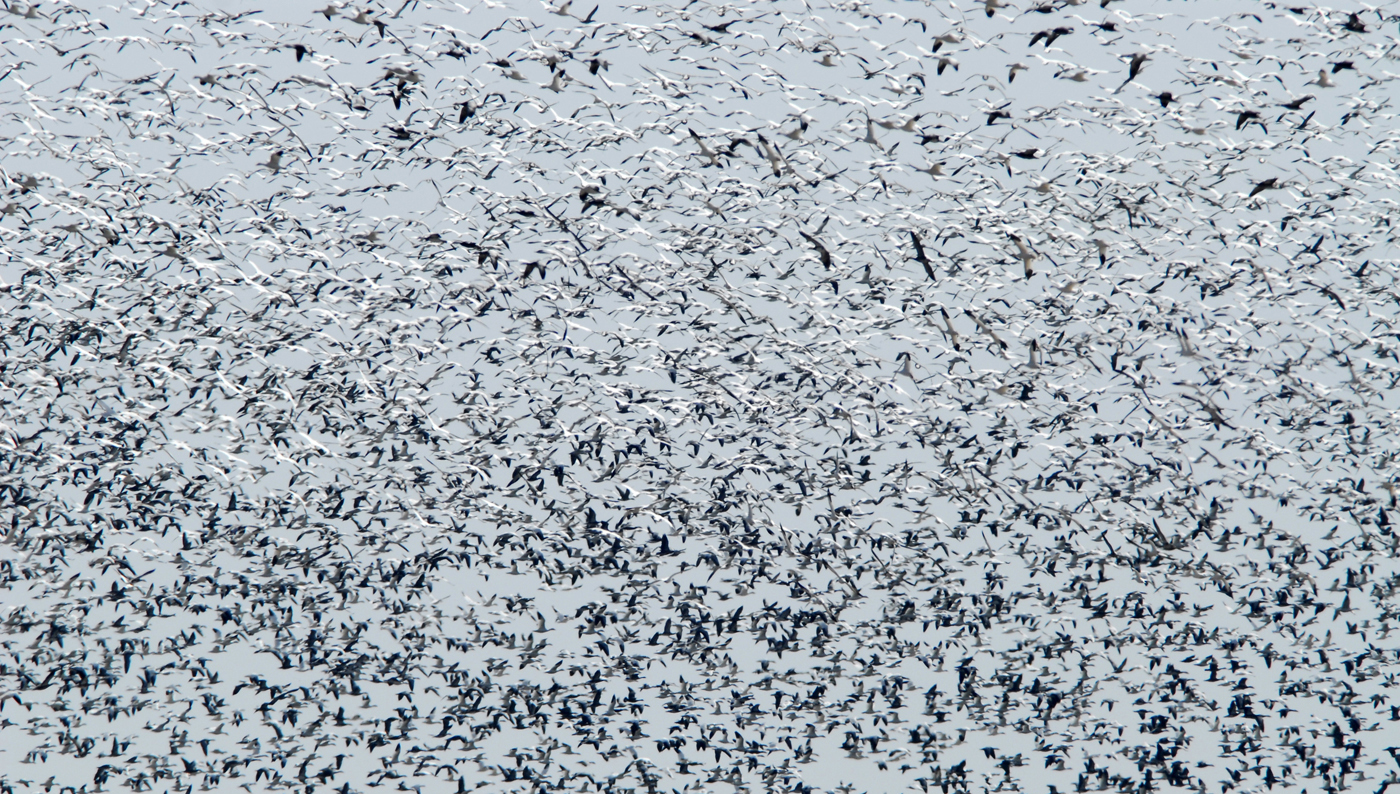
What’s good for the snow goose isn’t always good for the shorebird.
Source: Rising snow goose numbers worry biologists – Star Tribune – June 13, 2017
Biologists have been concerned for some time about our ever-growing population of snow geese.
The geese, which nest in far northern Canada, are tearing up their tundra habitat and disturbing nesting shorebirds. A decline in the numbers of shorebird species nesting there has heightened concern.
These geese are hard on their summer home because they pull food plants from the ground, roots and all. Tundra becomes mud. Wandering geese flush shorebirds from nests, leaving eggs vulnerable to predators.
Millions of snow geese migrate up the central flyway to nest on the tundra. Most of them fly through the Dakotas. Some migrate through Minnesota.
Snow geese once wintered in Louisiana and Texas coastal marshes. The number of geese there in the 1960s was estimated at 1.5 million. Today, a growing goose population that might be as high as 20 million is finding ample food in Midwestern and Southern agriculture fields.
“I think they benefit from feeding on waste grain in harvested fields from the Midwest south through Texas/Mexico in winter,” said Carrol Henderson, supervisor of the Minnesota DNR nongame wildlife program. “The geese come through the winter in excellent condition. And then they migrate in such huge flocks in spring that even those special hunting seasons in the spring to supposedly ‘control’ snow goose populations are ineffective.”
South Dakota has such a special season for snow and Ross’s geese. There is neither a daily nor possession limit.
Snow geese are not easy to hunt, however, numbers aside. “The geese don’t respond well to typical hunting setups with small groups of decoys,” Henderson said. Snow goose hunters sometimes deploy hundreds of decoys to mimic the large flocks in which the geese migrate. (Plus, how many geese can you eat?)
In Minnesota, hunters can take up to 20 snow and Ross’s geese per day in a season that runs Sept. 3-18. That’s 16 days, 20 birds per day, 320 white geese total, not that anyone hunts to that extent.
Biologists studying shorebirds in the Arctic only wish they did.
In Minnesota, five Canada geese can be taken per day during the season. (We have no shortage of that species, either.)
“With a changing climate the length of the summer season in the northern Arctic is longer. It allows time for the geese to nest and fledge young in areas that formerly would not have been suitable for nesting,” Henderson said.
“It’s a good example of a very real change, and a very real threat to North American migratory shorebirds and their habitats,” he said. “It’s an example of how all of these species and habitats are interconnected on an international scale. It also shows that climate change is not a figment of someone’s political imagination.
“The change is real,” Henderson said. “It’s having significant negative consequences for many of the wildlife species we care about.
“Ironically, it has resulted in some positive consequences for species like the snow goose,” he said.


